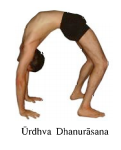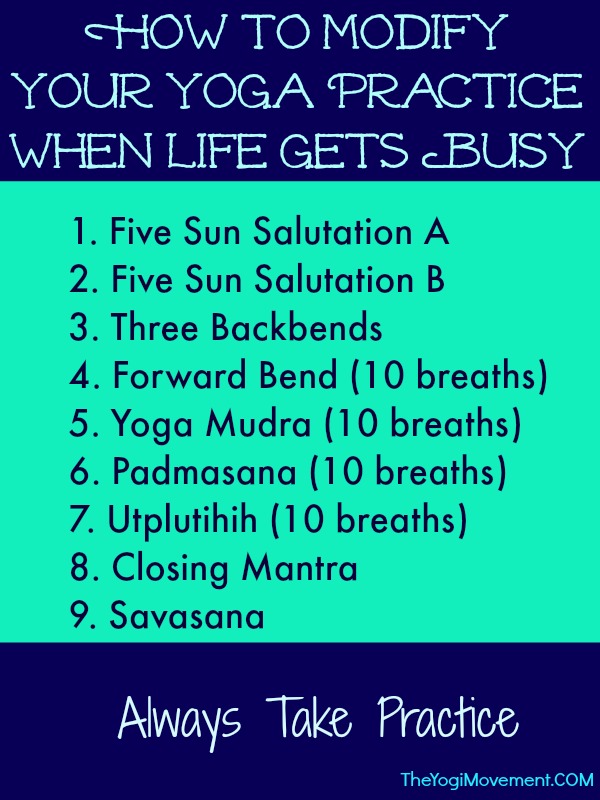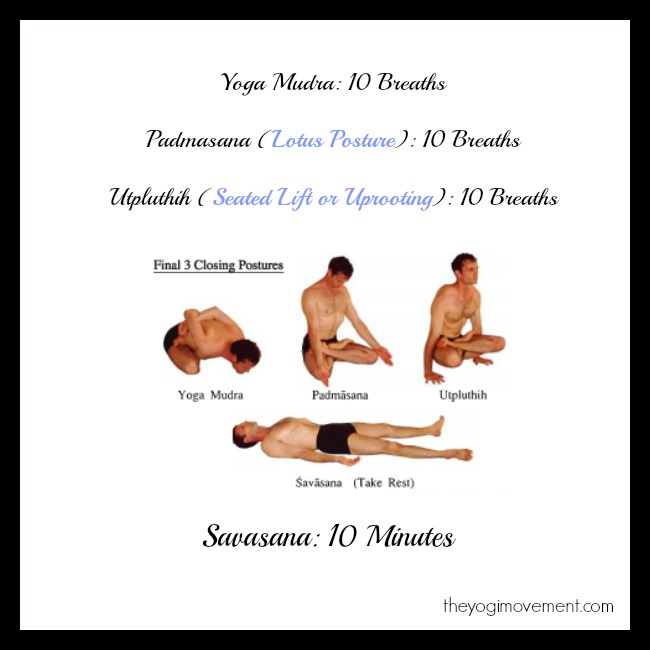“Calmness of mind is one of the beautiful jewels of wisdom.” ― James Allen
Your life is turned completely upside down. You have an endless to do list. You check one thing off and add 10 more. You can’t stick to your normal schedule. You wake up every morning exhausted. You set the intention to practice every day, but end up sleeping instead. Sound familiar?
Remember that practice will help you get through these difficult times, so it’s better to practice every day then to not practice at all.
It seems like my life is always in an intense transition, so I have a good amount of experience with this. The first time this happened, I struggled to fit in my whole practice. I tried changing my practice to nights, but that didn’t work because I would get home and just want to chill. A friend would call to grab dinner, and instead of saying, “No, I have to practice,” I’d go and hang out.
Even though mornings and nights are beneficial, morning practice always wins. I prefer to let the energy of the practice carry me through the day and have my nights free.
Once you decide on your practice time, schedule it in and keep it consistent.
If you’re experiencing insanity, here’s a guide on how to modify your yoga practice and still keep it traditional and consistent.
[Tweet “Too busy to make it to yoga? No problem. Here’s a guide that anyone can do at home!”]
A. Always start with the opening mantra <click here> (You can even chant it with me every morning)!
B. Five Surya Namaskara A (Sun Salutations)
C. Five Surya Namaskara B
Sun Salutations are the most important because they teach you how to slow down, steady the breath, and steady the mind. Don’t think of these as a warm up. Sun Salutations are really their own separate practice, and should be treated like that.
D. Three Urdhva Dhanurasana (Backbends or Bridges): Always try to push up unless you have a known injury – even if you just lift up to your head. If it feels impossible, or if you’re a little scared – still try.
E. Forward Bend – Always hold a forward bend for 10 to 15 breaths after backbends to release any pressure from the lower back, or any area focusing on the spine.
F. Three Closing Postures: These are just as important as the Sun Salutations. Even if you don’t have time for backbends, make time for The Closing Three. Hold each of these for 10 of your deepest breaths. When you get to Utpluthih, tune in, and don’t shorten the breath.
G. Chant the Closing Mantra with me! <click here>
H. Take Savasana (final resting posture): Hold this for at least 10 minutes, and try not to fall asleep. It’s common to fall asleep, but the purpose is to increase your awareness and let go of distractions. During sleep the mind becomes distracted.
I attended a Kino MacGregor workshop, and she mentioned that Guruji still considered this a full Ashtanga Practice. I personally find that if I am going through transitions, and I take a step back committing to this format, then it’s only a matter of time before my full practice returns.
Practice is your path to inner peace, so plan your life around your practice, not the other way around.
Good luck and Namaste!






Thanks for this post! I liked that you have Savasana as a whole 10 minutes, it’s so easy for me to skimp on it, but feels so much better when I don’t!
Awesome Catie! Yes, I think Savasana is the most important. It’s so tempting to skimp, and I think that’s why it’s one of the toughest postures!
If I every start yoga this quick condensed version is what I need with our hectic schedule. I hear yoga is so relaxing that it would probably make me less of a cranky mommy if I try it which the kids would appreciate.
That made me smile. If you ever try it out, let me know. It might even be fun to do with the kids sometimes!
This is such a great post, Monica! I used to practice yoga several times a week, but being so busy lately, I’ve been slacking. This puts things into perspective and the pose pictures are a huge help! ~Visiting from SITS~ 🙂
I’m so glad you found this helpful! I think even a small practice is better than nothing. Thanks for reading 🙂
this is wonderful! I practice in the mornings as well, since I found not only is it harder to make an excuse not to, but the energy helps me make more healthful choices throughout the day. However, with a puppy and a full time job and other commitments, having a 10 minute cutdown is super helpful to make sure yoga stays a consistent part of my life! Thanks for sharing!
Mary, you are speaking my language! I feel that practicing in the morning can make all the difference in my food choices as well as how I decide to react to situations. I’m so glad you found this helpful! Thanks for reading & have a great day!
These are great tips! I may try doing this quick practice with my daughter. I always want her to join me but my regular practices are too long for her to stay focused. Great tips!
Some is better than none! Happy SITS Day, late.
Thank you so so much for reading!
I pinned this so my followers can have access to this great abbreviated practice. 10 minutes is absolutely better than nothing. I’ll have to integrate it myself, as a nice way to stretch and release in conjunction with my daily workout.
Hi Lisa! Thanks for pinning! I hope this works for you, and if you need any modifications, let me know!